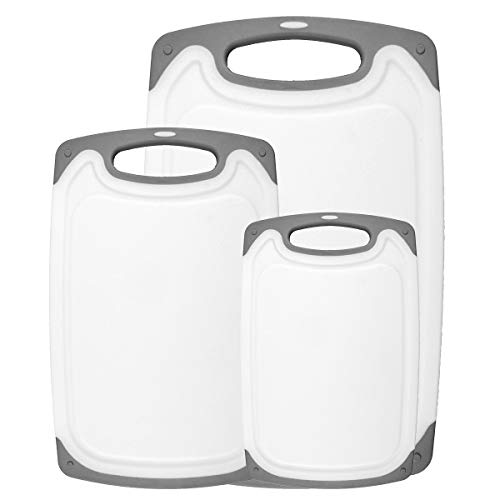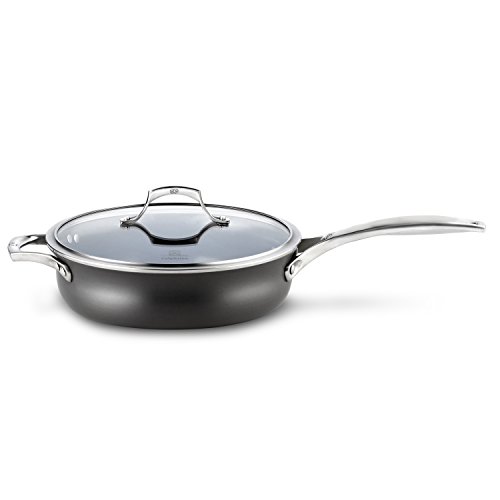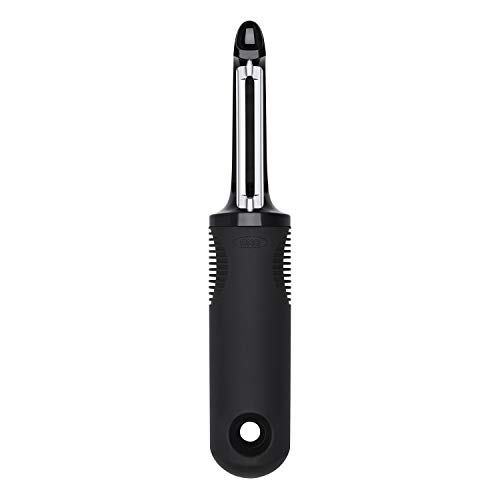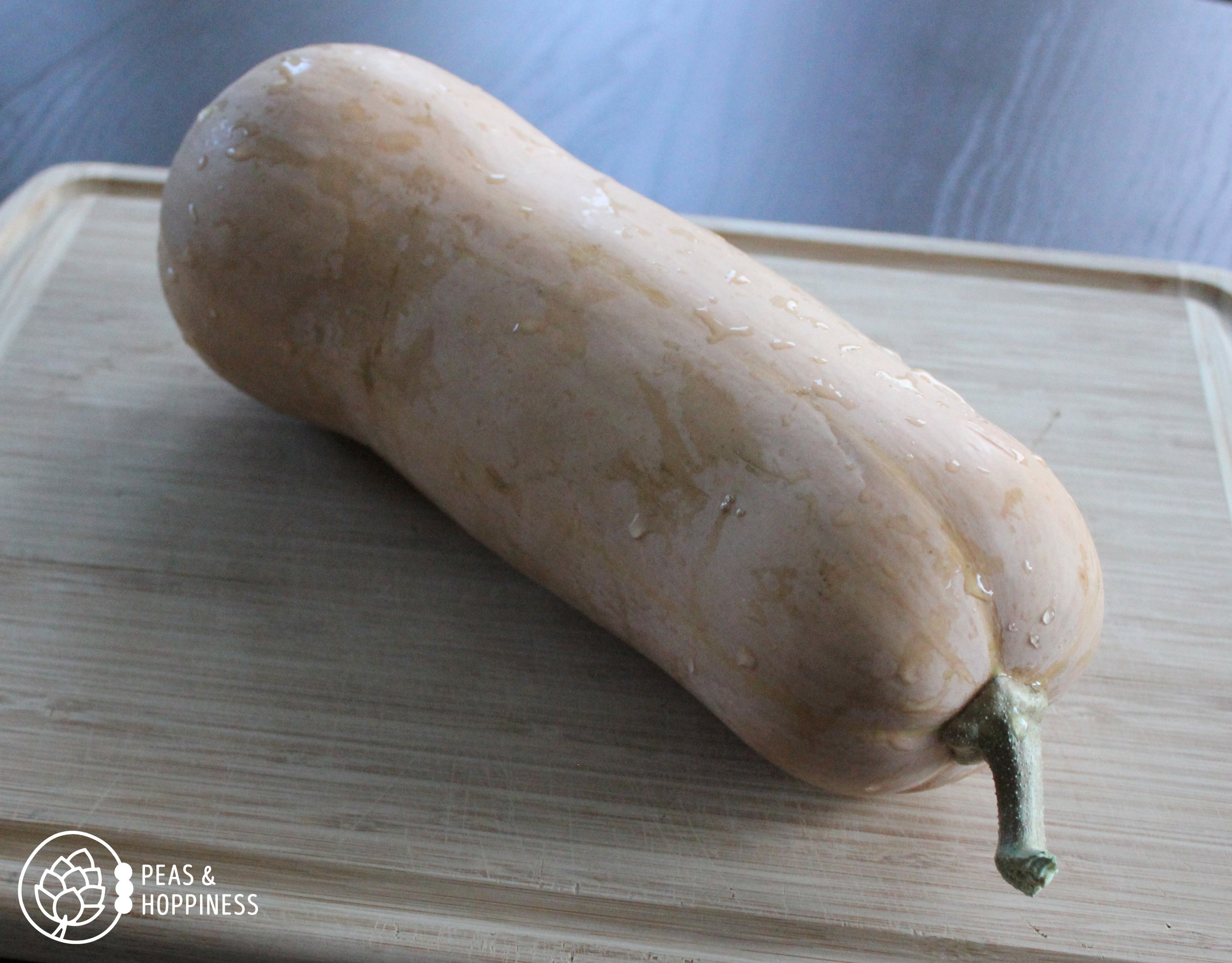
A simple, versatile vegetarian recipe featuring black beans and winter squash. Use a plant-based yogurt and cheese for a vegan version.
I am officially up to my ears in butternut squash.
Lately when I’ve collected my CSA I’ve been stocking up on these gems. CSA stands for Community Supported Agriculture and is a wonderful way to support a local farmer AND receive fresh, affordable veggies all season long!
I’m able to store butternut squash for several months before they go bad, and because we just can’t keep up with the quantity of produce we get with our CSA (great problem to have, right?), I’ve chosen to store a few of these so we have fresh produce in the dead of winter.
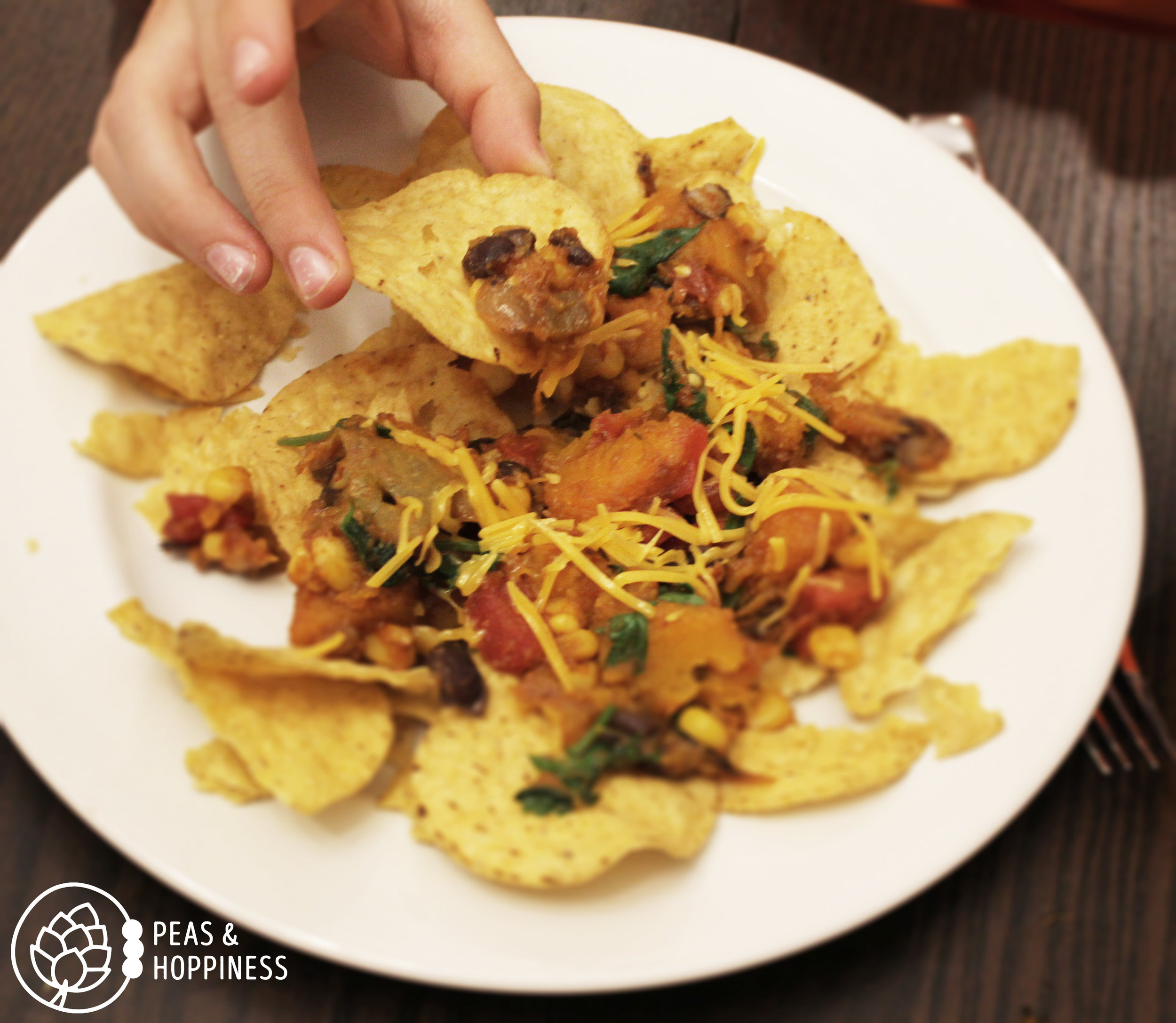
Butternut Squash Mexican Skillet, Nacho-Style (but it is my style! haha, food puns…)
Lucky for me, when we ran out of zucchini and peppers yesterday I could pull one of the butternuts and make a quick, yummy dish. For the non-meat-eater, this Butternut Squash Mexican Skillet is a great vegetarian source of protein.
In a world obsessed with protein, I sometimes feel that I stand alone in not fretting about it. Here’s why: your body doesn’t store extra protein. It uses what it needs for repairing cells and building muscle (which only happens if you’re also exercising – just eating more protein won’t do anything for muscle strength or tone), then breaks down the rest as energy (i.e. calories, similar to fat or carbs).
Let’s back up.
Food is made of three major (macro)nutrients: carbohydrates, protein, and fat. Your body uses each of these nutrients for a specific purpose. A tragedy (well, that’s melodramatic, but you get the idea) of our culture is mixing up the intended purpose of each.
Carbohydrates: Fuel for Brain & Muscles
Carbs are your body’s main energy source. Your muscles and your brain run on – and prefer to use – calories from carbs. That’s right; our bodies are built to run on carbs.
Carbs come from starches and sweets. Not all are created equal – some are really good for you (fruits, legumes, starchy veggies, and whole grains that contain lots of fiber) and some are just empty calories (the sugar in the Salted Caramel Mocha that I’m drinking this morning).
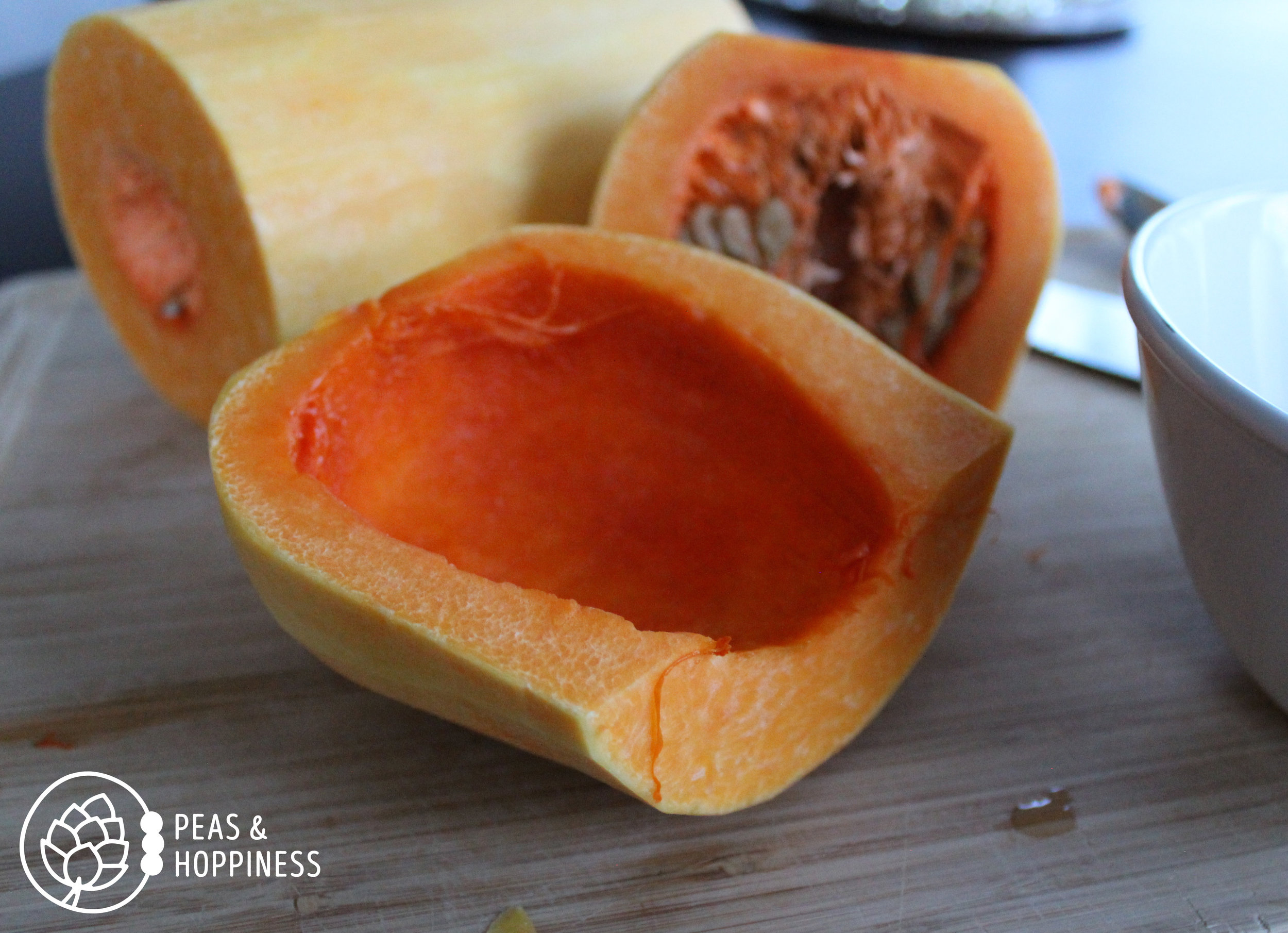
Protein: Building Blocks for the Body
Proteins are the building blocks for your body. They make up many different components of cells (like ribosomes), DNA, muscles, enzymes, hormones, and more. Protein is pretty important, but you really don’t need all that much of it – about 10-20% of your daily calories should come from protein.
Animal sources of protein (like meat, milk, or eggs) are complete sources of protein – meaning they contain all nine essential amino acids. Vegetarian sources of protein don’t contain all of the essential amino acids (except soy, which does), so you need to eat complimentary proteins to get all of them. Grains compliment legumes, so pairing a grain in a meal with a legume will give you all nine of the essential amino acids. Here are a few examples of common complimentary proteins:
-
Peanut butter on bread
-
Beans and rice
-
Lentils and naan
-
Corn and black beans
Fat: component, Transporter, Storer, protector, Etc.
Ah, fat. It’s one of America’s least favorite nutrients (although lately carbs have really been demonized), but it’s one of my personal favorites. Fat has a whole slew of functions in the body: a structural component of cells, transporter of nutrients, storage form of energy, protection and warmth.
Let’s be clear: too much fat isn’t a good thing. But we do need fat to live! Just like carbs, there are healthy fats (mono- and -polyunsaturated from avocados, nuts, olive oil, etc.) and unhealthy fats (saturated and trans fats from butter, lard, bacon, fatty meats, and partially hydrogenated oils).
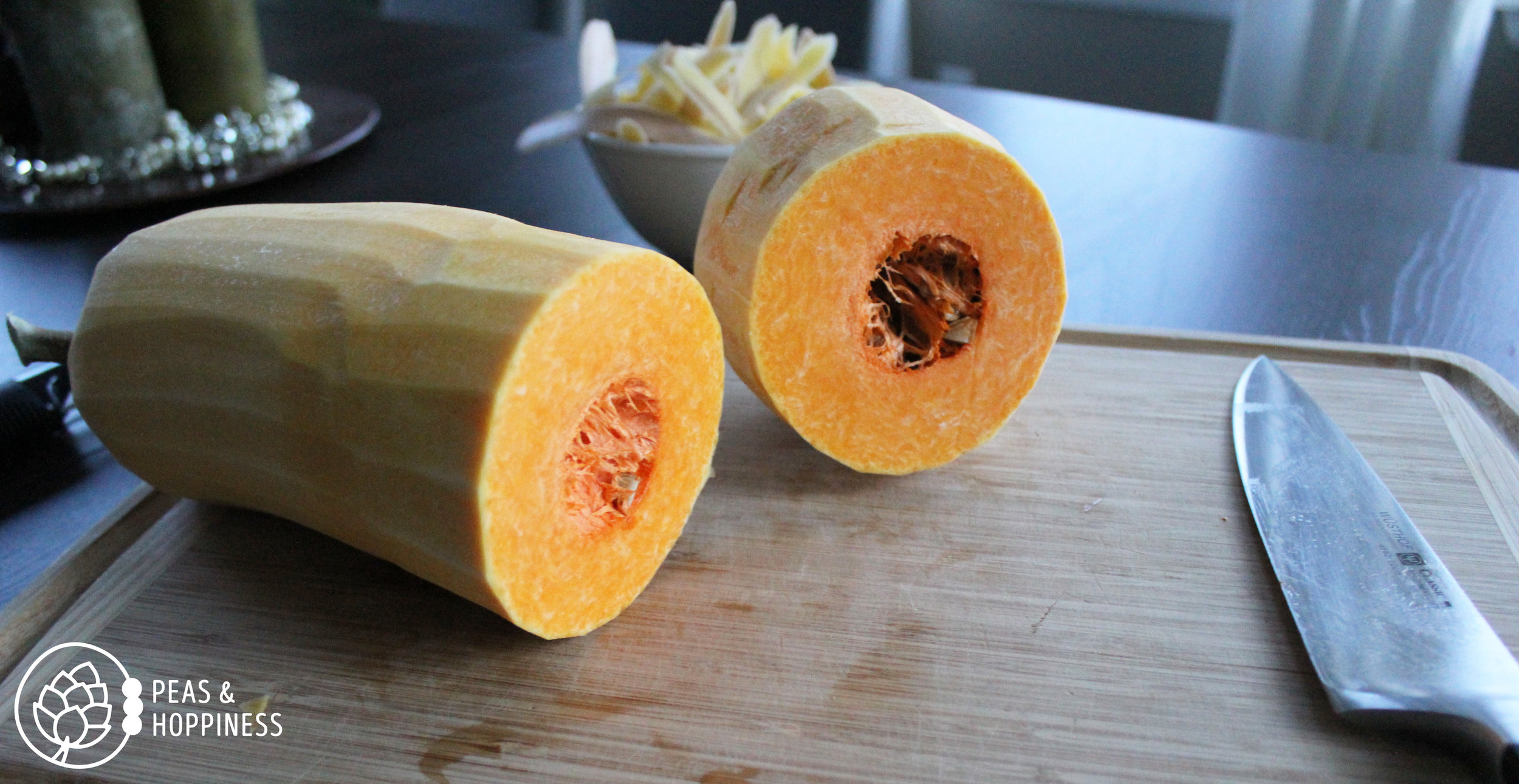
Looking for more ways to use butternut squash? Download my 5 Favorite Butternut Squash Recipes
Now I’m excited to share one of my favorite fall recipes: Butternut Squash Mexican Skillet dish.
Start by preparing an onion: trim top and base off onion, then peel tough outer layers (usually top 1—2 layers). Slice in half lengthwise and lay the onion with the cut (flat) side face down. Slice the onion into thin wedges, about 1/4-inch thick.
In a large, deep skillet heat two tablespoons canola oil until shimmering over medium-low heat. Add onion and sauté at medium-low temperature, stirring occasionally to ensure even cooking while preparing butternut squash.
Watch a demonstration of how to prep a butternut squash
Prepare a medium-sized butternut squash: peel squash using a vegetable peeler (can microwave for a few minutes to soften squash slightly). Cut bell of squash from the neck, then cut bell in half. Remove seeds by scraping inside of squash firmly with a spoon. Cut squash into evenly sized 1/4-inch cubes. Add butternut squash cubes to skillet, turn heat up to medium-high, and cook 15-20 minutes until butternut is soft enough to insert a fork.
To the butternut squash add two cans of black beans (or about three cups), one can diced tomatoes (about two medium tomatoes from the garden), two cups frozen corn, on teaspoon salt, one teaspoon cumin, one tablespoon fresh cilantro, and one tablespoon chili powder. Add remaining ingredients and seasonings to skillet. Cook over medium-high heat another 8-10 minutes until heated through, stirring just enough to mix well.
Serve plain, in tortillas, or over tortilla chips. Additional toppings: shredded cheese, sour cream or plain Greek yogurt, cilantro, or salsa.
For more tried & true plant-based recipes and a weekly menu planned around seasonal produce, learn more about the Peas & Hoppy Meal Guide Membership. Start your free trial and let me take the stress out of dinner, allowing you to spend more time enjoying meals with your family and less time arguing about what to eat.
Enjoy!
Ann from Peas & Hoppiness
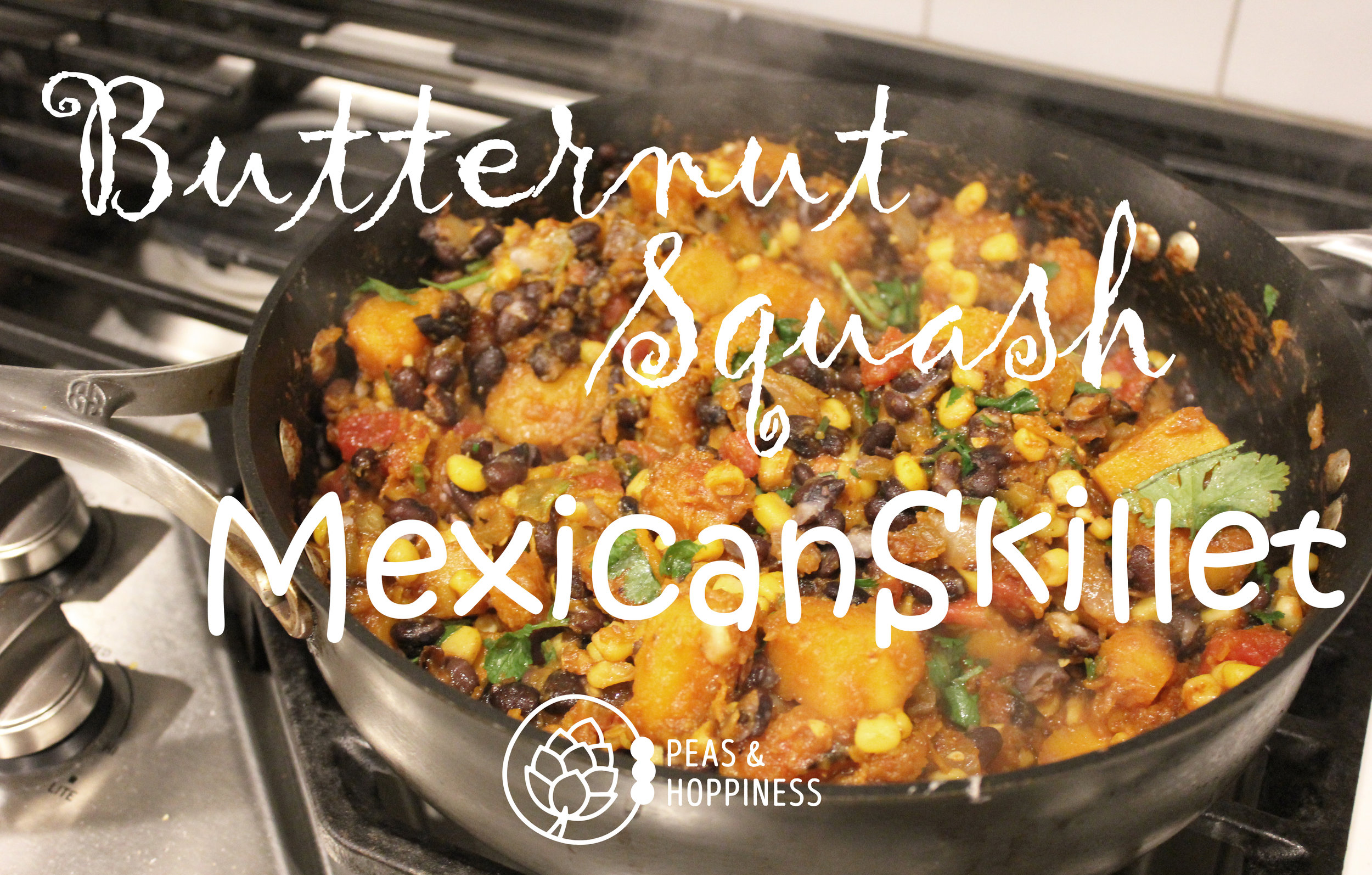
Butternut Squash Mexican Skillet Recipe
Ingredients
-
1 large white or yellow onion
-
2 Tbsp. canola oil
-
3 c. butternut squash cubes (1 medium butternut squash, about 2-3 lbs)
-
1 (14.5 oz) cans black beans, or about 1 3/4 cup
-
1 (14.5 oz) can diced tomatoes, or 2 medium tomatoes diced
-
1 c. frozen corn
-
1/4 c. fresh cilantro, chopped
-
1 Tbsp. chili powder
-
1 tsp. cumin
-
1 tsp. salt
-
1/2 c. sour cream (optional topping)
-
4 oz. cheddar cheese (shredded, optional topping)
-
1 c. salsa (optional topping)
Instructions
-
Slice onion into wedges and add to large sauté pan with canola oil and begin to cook over medium heat. Stir occasionally to ensure even cooking.
-
Meanwhile, peel, seed, and cube butternut squash. Add squash to skillet with onion as cubes are cut. Turn heat up to medium-high and cook 15-20 minutes until butternut is soft enough to insert a fork.
-
Add all remaining ingredients to skillet. Cook additional 8-10 minutes until heated through, stirring just enough to mix well but taking care not to mash squash.
-
Serve plain with toppings, over a bed of greens, in tortillas (burrito-style), or over tortilla chips (like nachos). Toppings suggestions: shredded cheese, sour cream or plain Greek yogurt, fresh cilantro, or salsa.
Printable Recipe // Serves: 4 – Serving Size: 1 1/2 cup – Nutrients per serving: 336 calories — 8g total fat — 1g saturated fat — 0g trans fat – 0mg cholesterol — 669mg sodium — 60g total carbohydrates — 14g fiber — 12g protein
Total Time: 50-55 min // Prep time: 30 min // Cook time: 20-25 min
Serving Size: 1 1/2 cup + 1 Tbsp. Sour Cream + 1/4 c. Shredded Cheese + 1/4 c. salsa
Pro Tip: Fresh always tastes better, but if you don’t have fresh herbs on hand substitute their dried equivalent in one-third the amount. For example, if a recipe calls for 1 Tbsp. freshly minced parsley, substitute 1 tsp. dried parsley (3 tsp = 1 Tbsp).
Cooking Equipment: Cutting board // Chef’s knife // Large sauté pan // Vegetable peeler // As an Amazon Associate and member of other affiliate programs, I earn from qualifying purchases.
Cooking Techniques
Slice onion into wedges: trim top and base off onion, then peel tough outer layers (usually top 1—2 layers). Slice in half lengthwise and lay the onion with the cut (flat) side face down. Slice the onion into thin wedges, about 1/4-inch thick.
Peel and seed butternut squash: Peel with vegetable peeler. If too tough, stab with a fork several times, then microwave 5 min until begins to soften. Cut squash in half crosswise above the bell, below thinner neck. Next cut bell in half lengthwise. Use a spoon to scrape out seeds.
Cube butternut squash: Cut neck of squash into 1/4-inch wide slices. Lay slices flat and cut lengthwise into strips. Turn strips a quarter-turn; cut across slices into cubes. Lay bell cut-side down and slice into wedges, then turn quarter-turn and cut across slices into cubes.
Roughly chop cilantro: cut leafy tops off stems (okay to include some stems). Stack leaves into a pile and chop into approximately 1/8-inch pieces.
Serves 4 – Serving Size: 1 1/2 cups + 1 Tbsp. sour cream + 1/4 c. shredded cheese + 1/4 c. salsa – Nutrients per serving: 474 calories — 23g total fat — 10g saturated fat — 0g trans fat — 48mg cholesterol — 1367mg sodium — 53g total carbohydrates — 13g fiber — 13g sugar — 19g protein — www.peasandhoppiness.com
